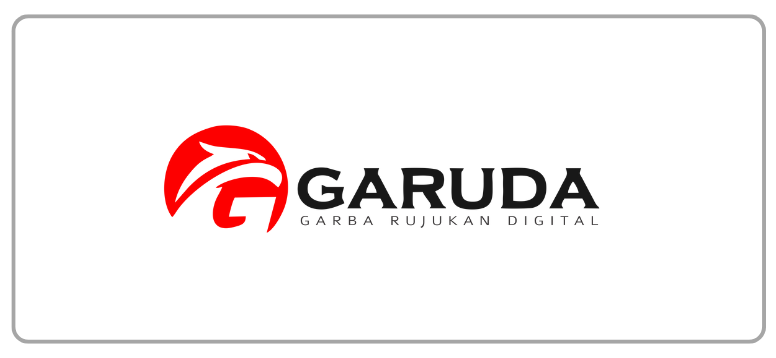Comparing Cost Leadership Strategy with Differentiation Strategy towards Firm Performance on Jakarta Islamic Index
DOI:
https://doi.org/10.21512/tw.v21i1.5963Keywords:
cost leadership strategy, differentiation strategy, firm performanceAbstract
The research aimed to examine the effect of cost leadership strategy and differentiation strategy on company’s performance. It was conducted in companies listed in the Jakarta Islamic Index from 2014 to 2018. Purposive sampling was used to obtain samples from 12 companies. Analysis was done by multiple linear regression with the help of the IBM SPSS 23 statistical program for windows with a quantitative descriptive approach. The results show that the cost leadership strategy influences company’s performance compared to differentiation strategy. The implementation of a low-cost strategy is significantly relevant to the condition of people who are sensitive to price and are not much aware about brand products in decision making. The design of a unique item model does not determine success in marketing a product, the relative price offered is quite high and only in certain market segments the product is of public interest. Product quality is defeated by the quantity of goods, people prefer how much goods are obtained than the durability of the products consumed.
References
Agustina & Sumartio, F. (2014). Analisa faktor-faktor yang mempengaruhi pergerakan harga saham pada perusahaan pertambangan. Jurnal Wira Ekonomi Mikroskil, 4(1), 51 - 61.
Amalia, E. (2015). Kajian penerapan Porter’s generic strategies di industri telekomunikasi Indonesia (Studi kasus: Telkomsel, XL, dan Indosat). Jurnal Ilmiah Teknologi Informasi Terapan, 2(1), 33-44.
Balsam, S., Fernando, G. D., & Tripathy, A. (2011). The impact of firm strategy on performance measures used in executive compensation. Journal of Business Research, 64(2), 187–193. https://doi.org/10.1016/j.jbusres.2010.01.006.
Birjandi, H., Jahromi, N. M., Darabi, S. A., & Birjandi, M. (2014). The effect of cost leadership strategy on ROA and future performance of accepted companies in Tehran Stock Exchange. Research Journal of Finance and Accounting, 5(7), 152-158.
Chang, H., Fernando, G. D., & Tripathy, A. (2015). An empirical study of strategic positioning and production Efficiency. Hindawi Publishing Corporation Advances in Operations Research, 11. http://dx.doi.org/10.1155/2015/347045
D. Banker, R., Mashruwala, R., & Tripathy, A. (2014). Does a differentiation strategy lead to more sustainable financial performance than a cost leadership strategy? Management Decision, 52(5), 872–896. https://doi.org/10.1108/MD-05-2013-0282
Ghozali, I. (2016). Aplikasi Analisis Multivariate dengan Program IBM SPSS 23, (8th Ed.). Jakarta: Universitas Diponegoro.
Josiah, N. M., & Nyagara, N. I. (2015). Assessment of the effect of cost leadership strategy on the performance of Liquefied Petroleum Gas companies in Eldoret Town, Uasin Gishu County, Kenya. International Journal of Business and Management Invention, 4(4), 1 - 7.
Maharani, I. A. P. R., & Budiasih, I. . . . . . . (2018). Penerapan Balanced Scorecard Sebagai Pengukuran Kinerja Perusahaan ( PT . Gde Kadek Brothers Layar Antarnusa- Bounty Cruises ). E-Jurnal Akuntansi Universitas Udayana, 25(01), 635–666. https://doi.org/10.24843/EJA.2018.v25.i01.p24.
Nainggolan, A. (2018). Competitive Advantage dan Upaya Meningkatkan Laba Perusahaan. 4(1), 1-14.
Niode, I. Y. (2012). Analisis Strategi Keunggulan Bersaing (Competitive Advantage) Sektor Usaha Kecil Menengah di Kota Gorontalo (Studi Industri Meubel di Kota Gorontalo). Jurnal Bisnis Dan Manajemen (BISMA), 04(02), 91–101.
Omsa, S., Ridwan, M., & Jayadi, M. (2018). Peran strategi generik Porter dalam memediasi pengaruh lingkungan industri terhadap kinerja usaha. Prosiding SNP2M, 6.
Purwantoro, P., Daryanto, H. K., & Djohar, S. (2018). Strategi bersaing dan pengukuran kinerja dengan pendekatan resources base view perusahaan komponen otomotif Indonesia. Jurnal Aplikasi Bisnis dan Manajemen. https://doi.org/10.17358/jabm.4.2.220.
Rokhyadi, A. (2014). Peran produk hijau dalam hubungan strategi generik Porter dengan kinerja perusahaan. Jurnal Perilaku dan Strategi Bisnis, 2(2), 16 - 26.
Rustamblin, D., Thoyib, A., & Zain, D. (2013). Pengaruh strategi generik terhadap kinerja perusahaan (Studi pada Bank Umum). Jurnal Aplikasi Manajemen, 2(1), 115-121.
Setiawan, A. S. (2016). Pengaruh pemilihan strategi deferensiasi terhadap kinerja keuangan (Studi empiris pada perusahaan manufaktur food & beverages terdaftar di BEI). Jurnal Akuntansi, 20(1), 104–116.
Setiono, B. A. (2015). Teori perusahaan/theory of the firm: Kajian tentang teori bagi hasil perusahaan (profit and loss sharing) dalam perspektif ekonomi syariah (Theory of the firm: Study on the theory of profit and loss sharing in syariah economic perspective). Jurnal Aplikasi Pelayaran dan Kepelabuhanan, 5(2), 153–169.
Tandelilim, E. (2010). Portofolio dan investasi: Teori dan aplikasi. Yogyakarta: Karnisius.
Wibowo, S. S. A., Handayani, Y., & Lestari, A. R. (2017). Strategi bersaing perusahaan dan kinerja perusahaan. Riset Akuntansi dan Keuangan Indonesia, 2(2), 143-150. https://doi.org/10.23917/reaksi.v2i2.4896.
Downloads
Published
How to Cite
Issue
Section
License
Authors who publish with this journal agree to the following terms:
a. Authors retain copyright and grant the journal right of first publication with the work simultaneously licensed under a Creative Commons Attribution License - Share Alike that allows others to share the work with an acknowledgment of the work's authorship and initial publication in this journal.
b. Authors are able to enter into separate, additional contractual arrangements for the non-exclusive distribution of the journal's published version of the work (e.g., post it to an institutional repository or publish it in a book), with an acknowledgment of its initial publication in this journal.
c. Authors are permitted and encouraged to post their work online (e.g., in institutional repositories or on their website) prior to and during the submission process, as it can lead to productive exchanges, as well as earlier and greater citation of published work.
USER RIGHTS
All articles published Open Access will be immediately and permanently free for everyone to read and download. We are continuously working with our author communities to select the best choice of license options, currently being defined for this journal as follows: Creative Commons Attribution-Share Alike (CC BY-SA)

















